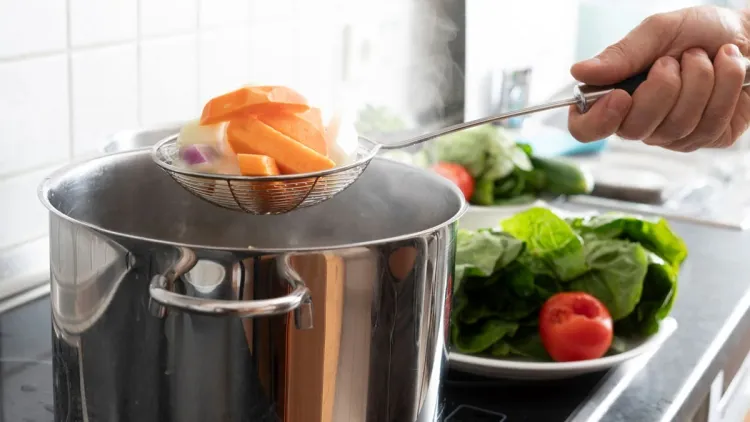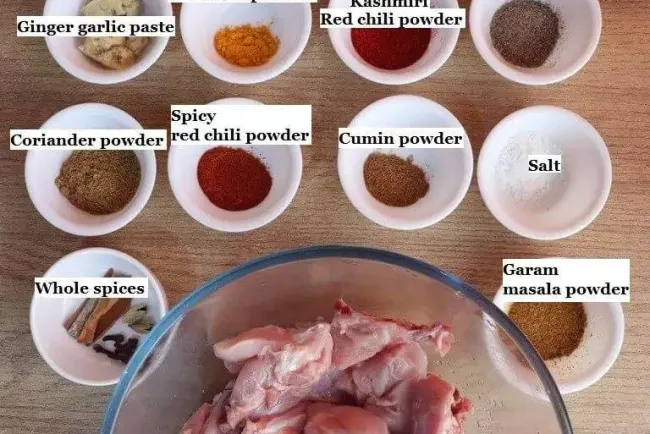Exploring Steam-Boiled Food: Types and Benefits...!!!
Steam-boiling is a versatile and healthy cooking method suitable for preparing a wide range of foods. From vegetables and seafood to grains and dumplings, steaming helps retain nutrients, enhance natural flavors, and provide a low-fat cooking option. Understanding the types and benefits of steam-boiled food can help you incorporate this nutritious method into your daily cooking routine, offering delicious and healthful meals.

Steam-boiling is a cooking technique that uses steam to preserve the nutrients, flavor, and texture of food. By placing food above boiling water, steam gently cooks it, making it a healthier option as it requires minimal oil and retains essential vitamins and minerals.
Types of Steam-Boiled Food
-
Vegetables:
-
Broccoli: Steaming broccoli helps maintain its bright green color, crisp texture, and nutritional value.
-
Carrots: Steamed carrots become tender while preserving their natural sweetness and vibrant color.
-
Cauliflower: Steaming cauliflower keeps it firm and mild-flavored, making it a versatile ingredient.
-
Spinach: Steaming spinach retains its nutrients and can be used in salads, soups, or as a side dish.
-
-
Fish and Seafood:
-
Salmon: Steaming results in moist, tender salmon that retains its omega-3 fatty acids.
-
Shrimp: Steamed shrimp cook quickly, preserving their natural sweetness and firm texture.
-
Clams and Mussels: Steaming these shellfish helps them open easily and preserves their delicate flavor.
-
-
Meat and Poultry:
-
Chicken Breast: Steaming keeps chicken breast moist and tender, making it a healthy protein option.
-
Turkey: Steaming turkey ensures it remains juicy and flavorful without added fats.
-
Pork: Steamed pork, such as in pork dumplings, stays tender and succulent.
-
-
Rice and Grains:
-
White Rice: Steaming results in fluffy white rice with evenly cooked grains.
-
Brown Rice: Steaming brown rice helps maintain its nutty flavor and chewy texture.
-
Quinoa: Steaming quinoa ensures it cooks evenly and retains a light, fluffy texture.
-
-
Dumplings and Buns:
-
Chinese Dumplings: Steamed dumplings retain their juicy filling and tender wrapper.
-
Bao Buns: Steaming keeps bao buns soft and fluffy, perfect for stuffing with various fillings.
-
-
Eggs:
-
Hard-Boiled Eggs: Steaming hard-boiled eggs results in a creamy texture and makes them easier to peel.
-
Egg Custard: Steaming creates a smooth and silky texture in egg custards, ideal for desserts or savory dishes.
-

Benefits of Steam-Boiled Food
-
Healthy Cooking:
-
Nutrient Retention: Steam-boiling helps retain essential nutrients like vitamins C and B that can be lost with other cooking methods.
-
Low Fat: This method requires minimal or no oil, making it ideal for those looking to reduce fat intake.
-
-
Flavor Preservation:
-
Natural Taste: Steaming enhances the natural flavors of food, making it taste fresher and more vibrant.
-
Minimal Seasoning: With retained natural flavors, less seasoning is needed, allowing the true taste of the food to shine.
-
-
Versatility:
-
Adaptable to Various Foods: Steam-boiling can be used for vegetables, meats, seafood, grains, and even desserts.
-
Combination Cooking: Steamed foods can be incorporated into various recipes like salads, soups, and main dishes.
-
-
Dietary Considerations:
-
Gluten-Free: Steaming does not require gluten-containing ingredients, making it suitable for those with gluten sensitivities.
-
Vegan and Vegetarian: Steaming is excellent for preparing plant-based meals, preserving natural flavors and textures.
-
-
Convenience:
-
Quick Cooking: Steaming is a fast cooking method, especially for vegetables and seafood.
-
Easy Cleanup: Steaming requires minimal cookware, making cleanup quick and easy.
-
-
Cultural Cuisine:
-
Asian Cuisine: Steaming is traditional in many Asian cuisines, used for dishes like dim sum, steamed fish, and rice.
-
Middle Eastern Cuisine: Steamed grains like couscous and bulgur are staples in Middle Eastern cooking.
-
Steam-boiling is a versatile and healthy cooking method suitable for preparing a wide range of foods. From vegetables and seafood to grains and dumplings, steaming helps retain nutrients, enhance natural flavors, and provide a low-fat cooking option. Understanding the types and benefits of steam-boiled food can help you incorporate this nutritious method into your daily cooking routine, offering delicious and healthful meals.
What's Your Reaction?

















